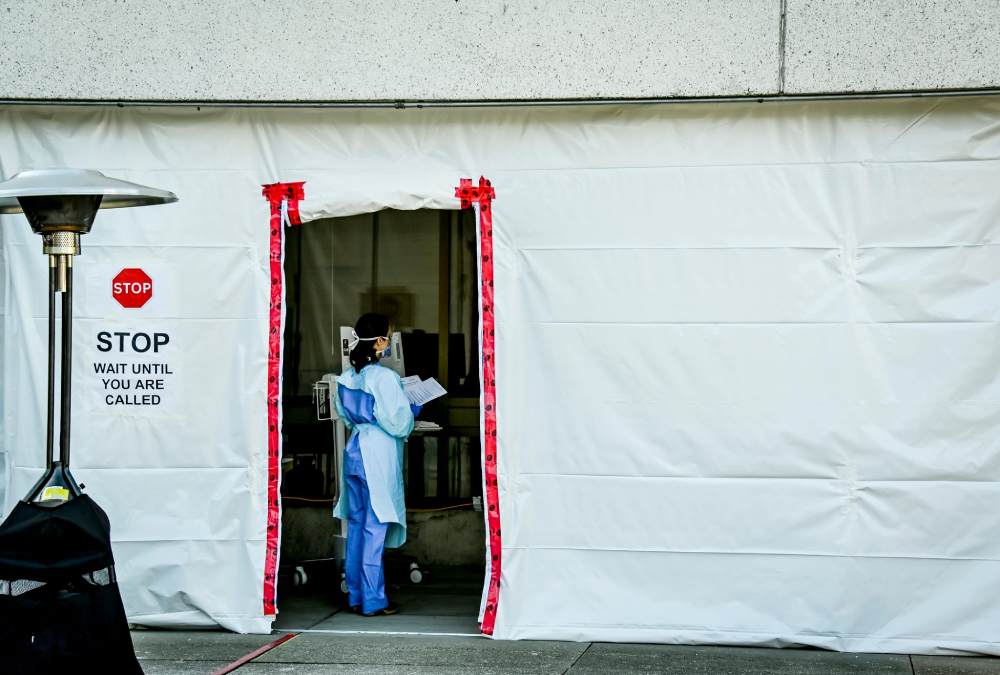- Fighting the First Wave: Why the Coronavirus Was Tackled So Differently Across the Globe
- Cambridge University Press (2021)
This is by far the best book yet written about the COVID-19 pandemic. No doubt better ones will appear eventually, but even they will have to deal with Peter Baldwin’s Fighting the First Wave — either to build upon its findings, or to attack it on the basis of better science than we now possess.
Having followed the pandemic from the first alarm on New Year’s Eve day in 2019, I have long since abandoned the metaphor of “sipping from a firehose”; tracking COVID-19 information is more like showering under Niagara Falls.
Yet Baldwin closely monitored the responses to the pandemic by governments around the world while writing this book in something close to real time — and put those responses into a historical context. He did so while hunkered down like most of us.
Now, just a year after the World Health Organization officially declared COVID-19 a pandemic, he has published this heavily documented, often witty, and strikingly readable book.
It certainly helps that Baldwin, a professor of comparative history at the University of California, Los Angeles, has published books on 19th-century European public health policies and the global response to AIDS. He understands health politics, and he has a strong grasp of health sciences as well. So he understands many of the strategies employed against the coronavirus pandemic and points out the critical factors that influenced those strategies.
The global response was literally all over the map. Two hundred countries with more or less capable health-care systems began with the same starting blocks in early January 2020: a new coronavirus was loose, and its genome was on the internet within days. And within days after that, governments “following the science” galloped off in all directions.
Baldwin argues that countries’ basic responses fell into three categories: “targeted quarantines” on the sick and their contacts, the strategy used by China and New Zealand, sealing them off from the rest of the population; fighting retreats, as seen in Brazil and Sweden, slowing the spread of COVID-19 so that the population would acquire “herd immunity” without swamping the health-care system; and the ditherers, like Canada and some European nations, which switched between lockdowns and loosening because they couldn’t face either mass deaths or mass poverty.
Strikingly, government responses didn’t reflect political ideology. Authoritarian China and Vietnam have done very well, and so have democratic Taiwan and New Zealand. In some countries right-wingers demanded hard lockdowns; in others they opposed the slightest infringement on their liberties.
Populism was certainly a factor: “Those who spurned and mocked the scientific advice fared poorly. Presidents Donald Trump in the U.S. and Jair Bolsonaro in Brazil presided over chaotic, almost deliberately inept, responses,” Baldwin writes.
But they also immediately saw that their poorest supporters would starve under a serious national lockdown, and that would cost them votes. Since they had no intention of changing the economic systems that impoverished those supporters, they tried to soft-pedal the pandemic — even at the cost of their supporters’ lives. As of late March 2021, the U.S. has seen 30 million cases and more than 545,000 deaths; Brazil has upwards of 12 million cases and 300,000 deaths.
Baldwin notes that even the most democratic governments have the legal power to shut down personal freedoms, and have often done so: “In every nation, the authorities have arrogated themselves emergency powers giving them free rein in epidemics.”
Taiwan and the People’s Republic both had laws against spreading false information, and Twitter eventually shut down Donald Trump.
However, having the ability to restrict personal freedoms for the greater good is one thing, but exerting those powers is another matter.
“Competence and compliance were closely connected,” Baldwin says. “Where the state delivered, it continued to be trusted.... Largely independent of their specific political ideology, the most successful nations had the competence to make quick and effective decisions and the administrative capacity to carry them out.”
But competence was not a panacea: “The Swedes picked the wrong direction and competently steered toward it.”
Most countries, including Canada, were fatally slow to respond. It’s a good question as to whether our slowness was due to our basic competence, our decisiveness, or our administrative capacity. We clearly learned nothing from our brush with SARS in 2004, or H1N1 in 2009.
Baldwin posits that Prime Minister Justin Trudeau may have been rattled by his wife Sophie Grégoire Trudeau’s early case of COVID-19, or his weak position as leader of a minority government, or by learning that his bureaucrats had shut down the Global Public Health Intelligence Network just months before the first cases were identified in Wuhan.
Long-standing health-care shortcomings are also a factor. The auditor general has just issued a damning report on the failure of the Public Health Agency of Canada to prepare for a pandemic like this.
Whatever the precise reason for the slow response, Canada, like all countries, had to make decisions based on both science and the political situation.
“An epidemiologist in power,” Baldwin observes, “is a politician, just as much as someone who may have been an actor or a soldier.”
And the decision-makers may be afflicted with what global health experts call “clinical nihilism”: the system can’t save everyone, so the disease can at best be contained, not suppressed.
Baldwin cites Sweden, which has a long history of hard lockdowns in dealing with outbreaks. Yet this time a democratic government yielded power to its chief epidemiologist, Dr. Anders Tegnell, who evidently believed in clinical optimism.
Restrictions were needless because Swedes were intelligent, responsible citizens who would do the right thing without being threatened, Tegnell believed. Many residents did, but many also did not.
What’s more, Baldwin shows that Swedish scientists twisted the data to escape the problem of asymptomatic cases — carriers who might be responsible, but still spread the virus. The result for Sweden was a disastrous death rate compared to its locked-down Nordic neighbours.
The pandemic as a class phenomenon also gets detailed in helpful analysis in the book. Baldwin observes that, “Many a humanities BA had cause to reflect on the complexity and fragility of modern society’s supply chains. Philosophers and litterateurs became aware not only of the existence, but also the eminent dignity of the invisible people who made their lives possible.”
Baldwin’s comparisons of different national responses don’t lead him to point out just a handful of governments that got it right. Instead, he argues that the pandemic is a problem in “geoepidemiology,” with each country confronting the same virus with wildly different resources. These include its own experience with disease, the quality of its health-care system, the equality of its society and the historical relationship between governors and governed.
While Baldwin’s global survey is an astonishing achievement, it is certainly not the last word. His focus is on the first wave, and countries that coped well last spring may be struggling now. In analyzing the historical background of public health, he sometimes rambles. Still, these are minor lapses in a book so sweeping, detailed and insightful.
Eventually, though not soon, a book will supersede this one as the second and third waves have superseded the first. Until then, Baldwin has largely set the terms of debate for this pandemic. ![]()
Read more: Coronavirus, Media
















Tyee Commenting Guidelines
Comments that violate guidelines risk being deleted, and violations may result in a temporary or permanent user ban. Maintain the spirit of good conversation to stay in the discussion.
*Please note The Tyee is not a forum for spreading misinformation about COVID-19, denying its existence or minimizing its risk to public health.
Do:
Do not: